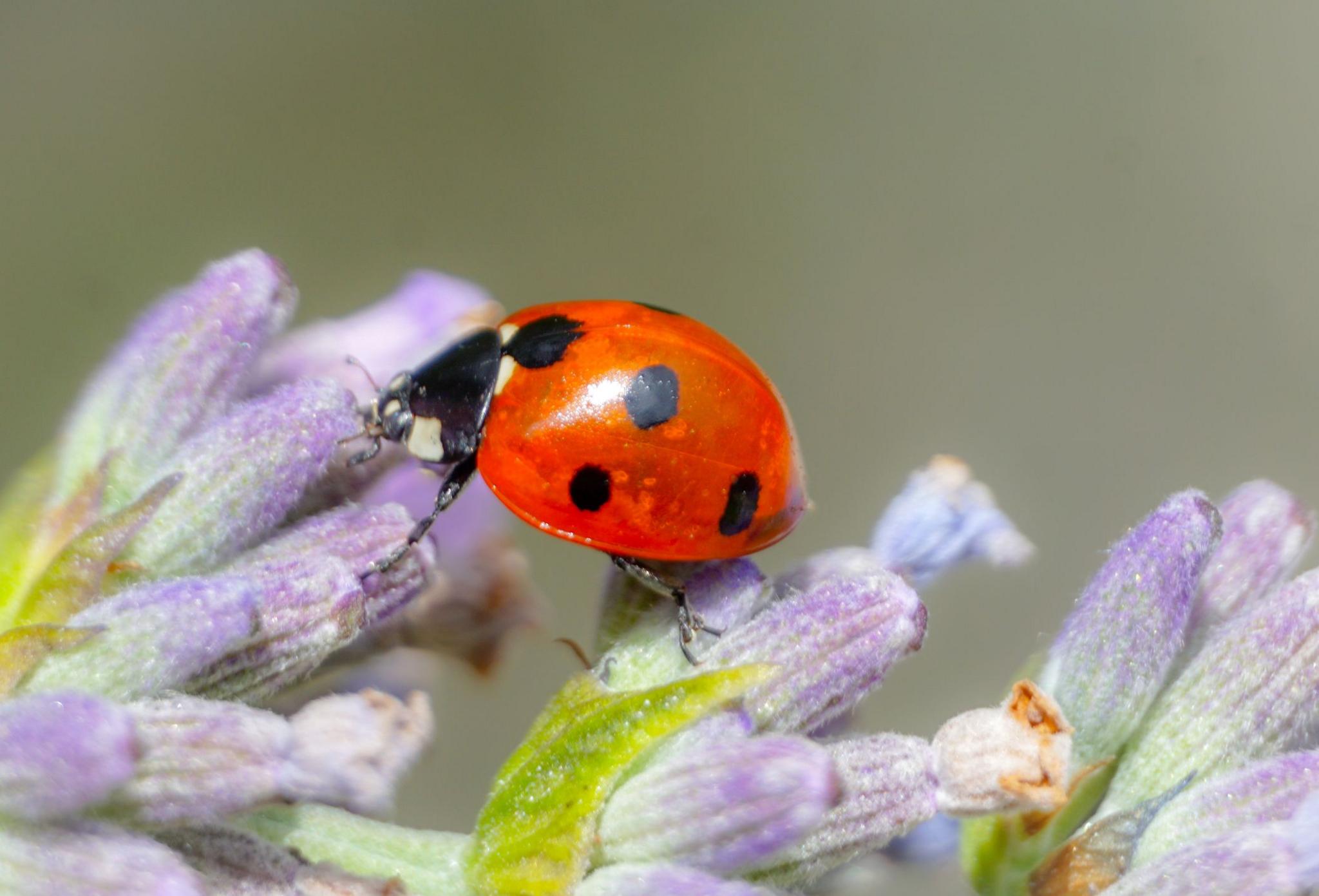Student discovers new species of mammal which lived alongside the dinosaurs
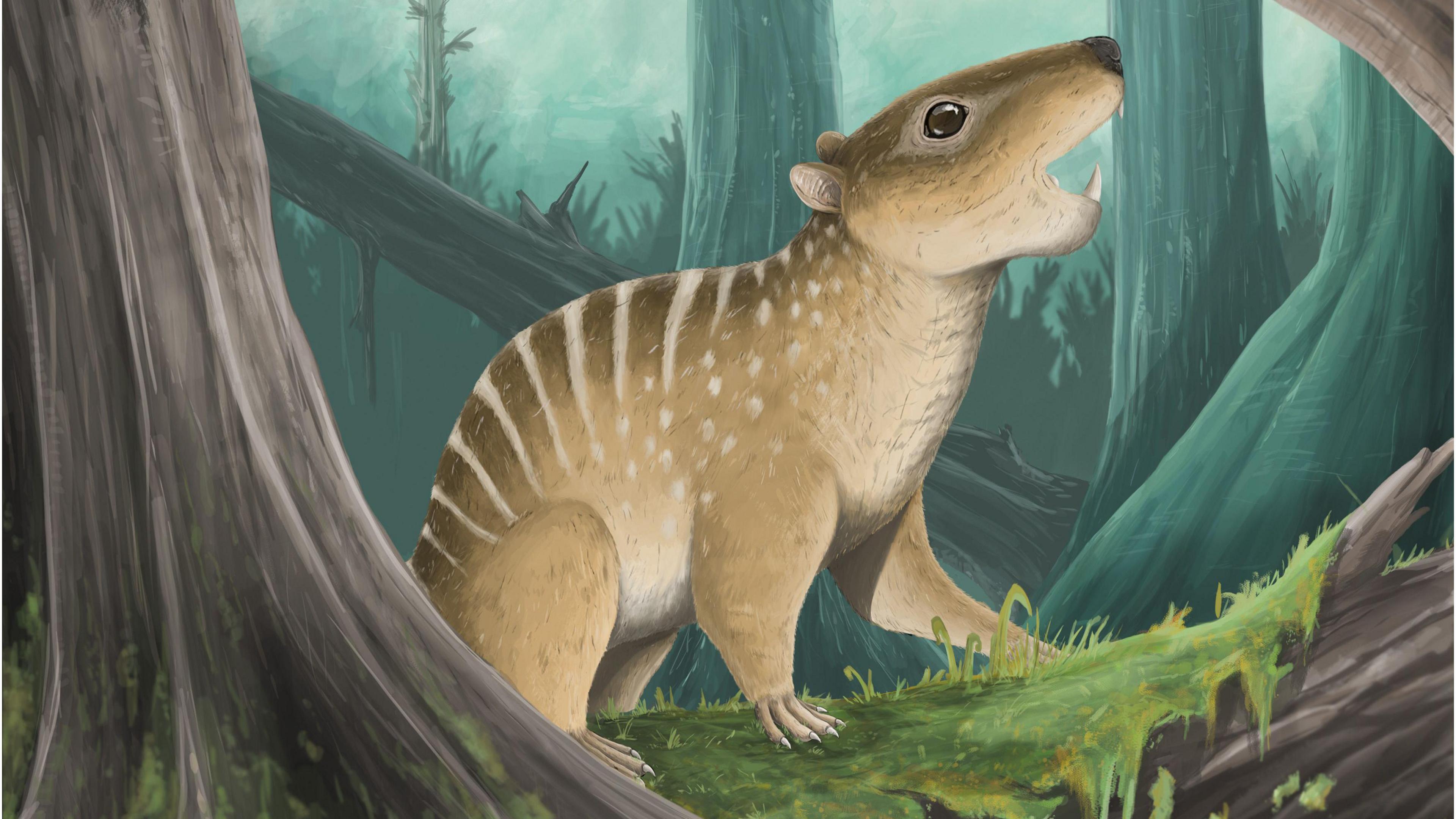
Another student from the University of Portsmouth created an artistic reconstruction of the animal
- Published
A student from the University of Portsmouth has discovered a new species of mammal which lived 145 million years ago.
Benjamin Weston, who studies animal and plant fossils, made the incredible discovery while searching at Durlston Bay near Swanage in Dorset.
He came across a fossilised lower jaw belonging to a completely new species of multituberculate, which is an extinct group of small mammals known for their distinct teeth.
The new finding provides more information about the early mammals that existed alongside the dinosaurs.
More like this
New species of dog-sized dinosaur to go on display in London
- Published25 June
New exhibition of GIANT prehistoric animals coming to UK
- Published5 June
The jaw, which is 16.5 millimetres in length, has a long pointed incisor tooth at the front, followed by a gap and then four razor-sharp teeth called premolars.
Although the jaw looks very similar to a rabbit's, the pointed incisors and unique premolars link it to the multituberculate group.
This discovery is the first jaw of this kind found at Swanage since the Victorian times, with its unique size and shape confirming it as an entirely new species.
"I instantly had my suspicions of what the jaw was when I found it at the beach, but couldn't have imagined where the discovery would take me," Ben Weston said in a statement.
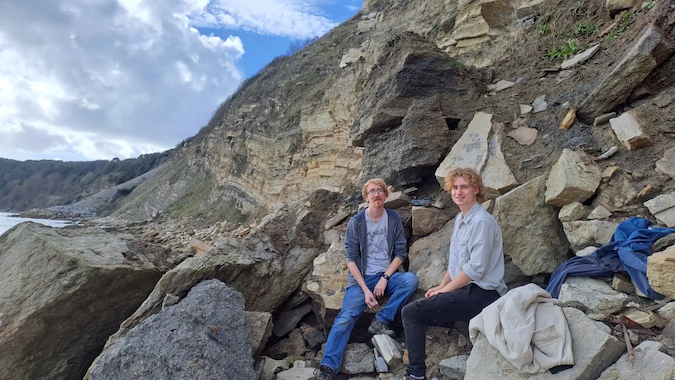
Portsmouth University student Ben Weston (right) made the incredible find during a search supervised by Dr Roy Smith (left)
The new found fossil did present some challenges, with pieces of rock covering up some of the vital details.
Special scanning was used to reveal what was inside the rock, producing remarkable results.
The scans were then processed digitally so the individual teeth could be examined one by one as part of more detailed studies.
These digital files were used to create copies of the teeth which had been magnified ten times, allowing safe study of the fossil without risk of damage.
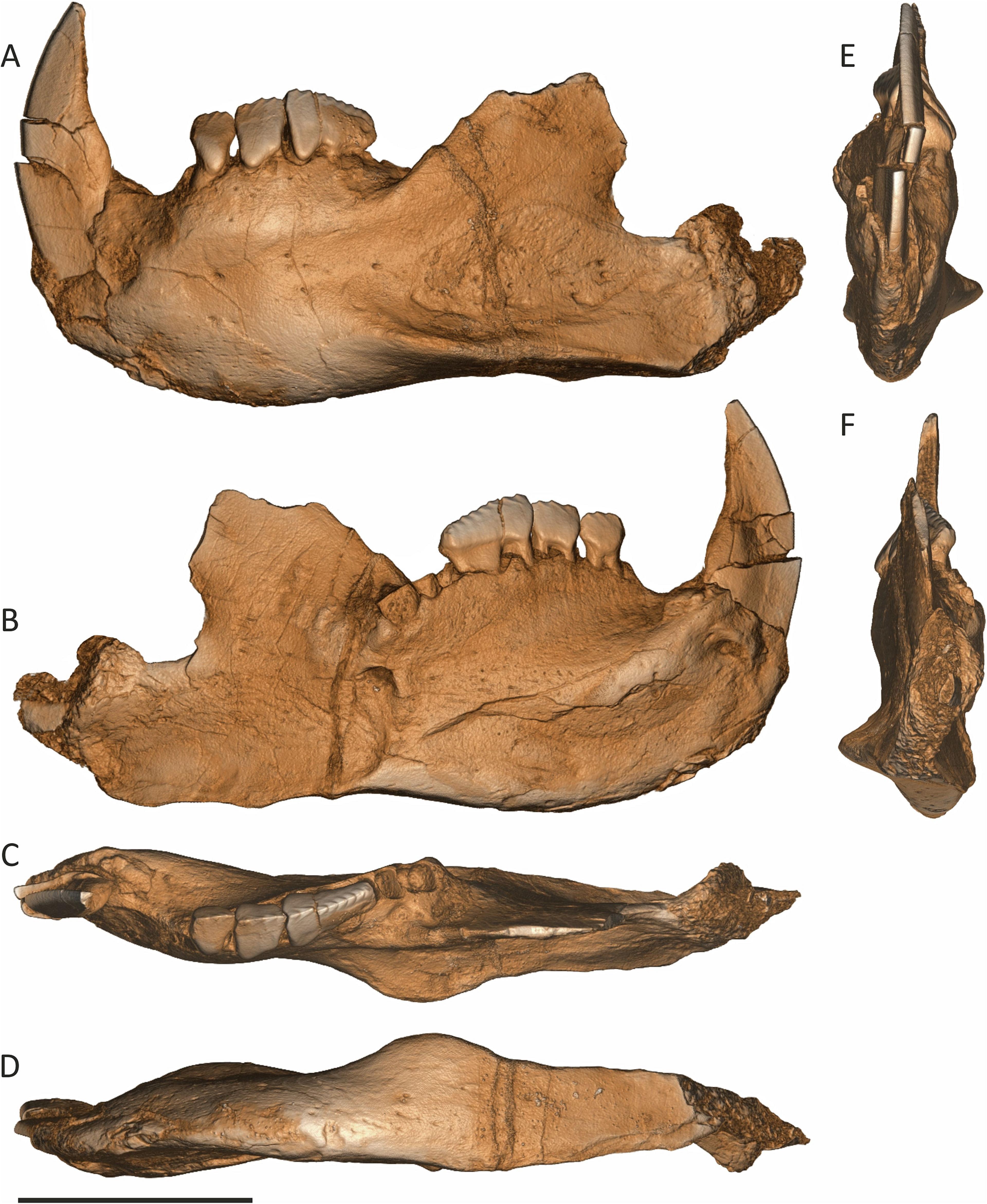
3D models of the tooth were generated from scans of the fossil
The new species has been named Novaculadon mirabilis.
"Novacula" describes the mammal's razor-like back teeth and "mirabilis" refers to the miraculous preservation of the animal.
Fellow Portsmouth student Hamzah Imran created an artistic reconstruction showing the animal as a small, furry creature with spots and stripes on its body.
The fossil evidence suggests Novaculadon mirabilis was omnivorous, which means it ate both plants and animals. They fed on small creatures like worms and insects.
Although the creature survived the event that killed the dinosaurs, they eventually became extinct around 33 million years ago.
More of the latest stories
- Published15 July
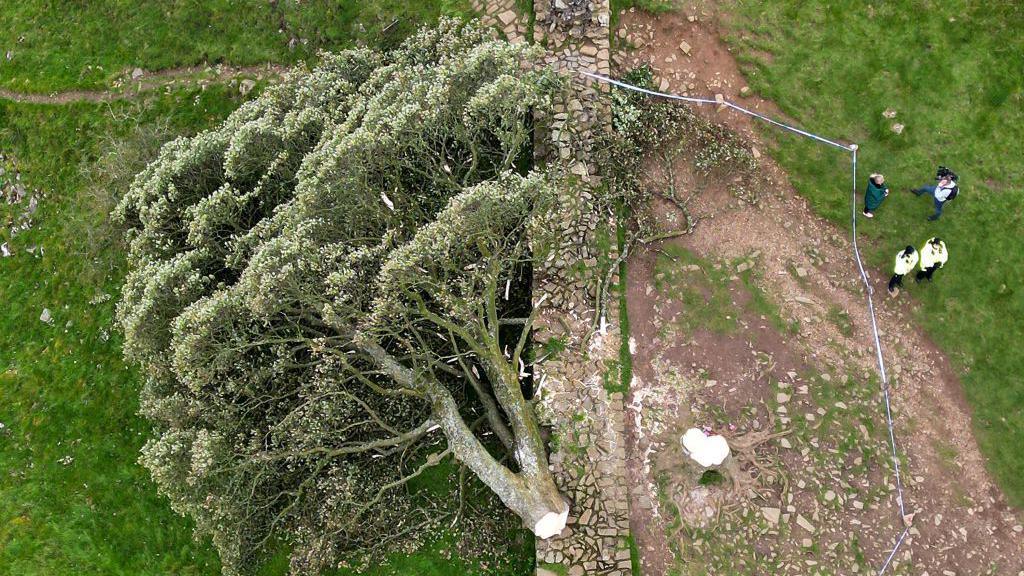
- Published15 July

- Published14 July
